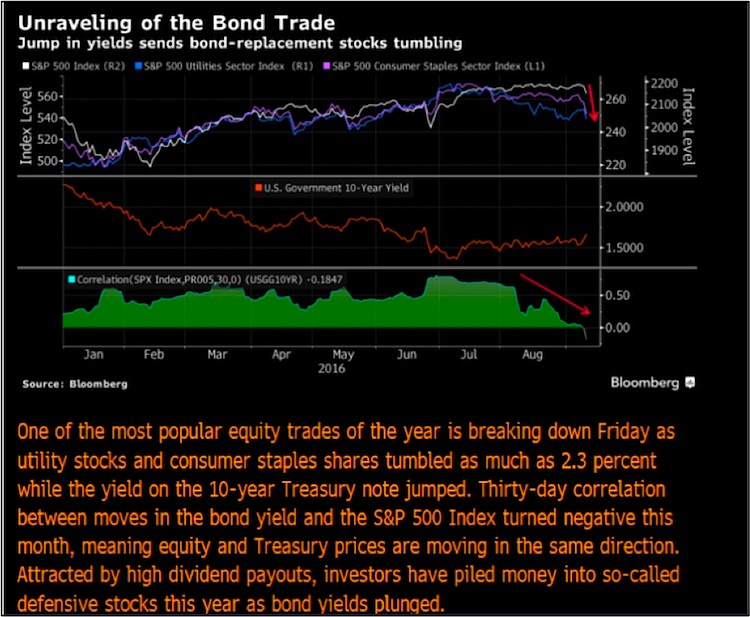Bond Upside
With the poor risk/reward skew in mind we turn back to the idea of using bonds to hedge against an equity market correction. If such a strategy is going to work, bond yields must fall further into record territory. Can this happen? We do not have the answer, nor does anyone else. Yields have already dropped well beyond the point that most professionals thought possible and given the potential for a deflationary economic recession, they may decline further. Additionally, the Federal Reserve will almost certainly employ bond friendly actions, as they have in the past, to quell equity market and economic turmoil. If Japanese and German ten-year notes are indications, U.S. Treasury yields can certainly go negative.
The question you must consider is, given extremely low yields and seemingly limited room to decline, do you have confidence that, in the event of an economic recession and severe equity market correction, yields will drop further? If so, then to what extent will such a decline protect you?
Bond Downside
If one is to hedge with Treasury securities, they must also consider what happens if yields do not decline during a market correction. What if “safe-haven” securities traditionally used for hedging purposes were to lose 5% to 10% or even 20% or more?
Below is a list of circumstances that could lead to rising bond yields, in a departure from prior major market corrections:
- Increased fiscal stimulus to combat a recession results in massive bond issuance
- U.S. Dollar decline incites international bond holders to sell
- Federal Reserve takes extreme actions (helicopter money) and inflation expectations soar
- Record low yields lead to a flight to safety in cash and precious metals instead of bonds
- Erosion of investor confidence in the ability of central bankers to protect markets
Current yield levels alter the traditional protection U.S. Treasuries and other bonds now afford. As James Grant of Grant’s Interest Rate Observer has stated, instead of risk-free return, one gets return-free risk. In other words, the past may not be prologue to the future. The hedging benefits that bonds have provided in the past do not appear to offer the same protection of prior periods. This analysis implies an important message for those looking to take a traditional equity hedging approach: the margin of error is quite small for anyone assuming that tomorrow will be like yesterday.
Summary
Recent history has favored those that used fixed income, especially U.S. Treasuries to hedge equity market drawdowns. That however does not take away one’s responsibility to question whether the current risk/reward proposition is still applicable. In a world of declining inflation, stagnating global economic growth and aggressive central bankers, such a hedging strategy may still make sense. However, I would be remiss if I did not reiterate a point made earlier – diversifying for diversification’s sake makes little sense if you are not buying assets that offer value.
There is relatively little upside for Treasury prices and a number of legitimate reasons yields could defy the pattern of the past 35 years and actually increase. Accordingly, one looking for true diversification should consider increasing cash positions, hedging with volatility instruments and/or options, and adding alternative assets such as precious metals.
Finally, I was gratified to see this news clip posted from Bloomberg as I was finalizing this article.
Thanks for reading.
Twitter: @michaellebowitz
Any opinions expressed herein are solely those of the author, and do not in any way represent the views or opinions of any other person or entity.








